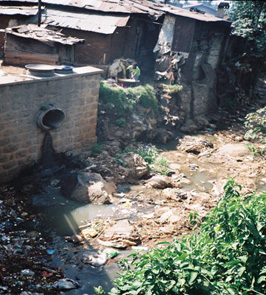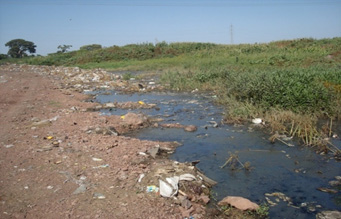7.3 Sources of pollution
Another way of classifying pollution is by the sector of human activity that produces it. Before we look at the various sectors, there is an important distinction to be made about pollution sources. Sources of pollution can be categorised as point or non-point sources. Point sources are identifiable points or places that you can easily locate. An example is a diesel truck that produces visible black exhaust fumes from its tailpipe. Liquid waste released from a pipe into a river is another example (Figure 7.4). A non-point source (also known as ‘diffuse pollution’) is one where it is difficult to identify the exact origin of the pollution. A good example is floodwater that washes all types of waste from the land (possibly including faecal matter) into a river. In this situation you cannot identify the individual or household or establishment that has caused the water pollution (Figure 7.5).


Can you think of examples of point and non-point source pollution from earlier in this study session?
The farmer washing his sack is an example of a point source because you could identify where he washed his sack. However, the pesticide washing from the field is an example of a non-point source. The pollutant would wash into the river at several places, and could possibly also have come from other fields. This is an example of how difficult it can sometimes be to accurately identify the source.
7.2 Physical nature of the pollutant
